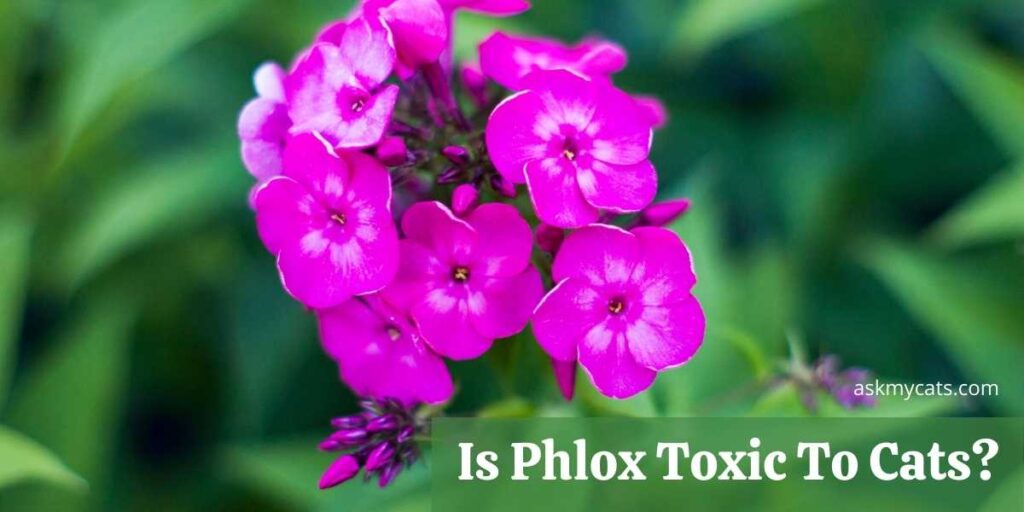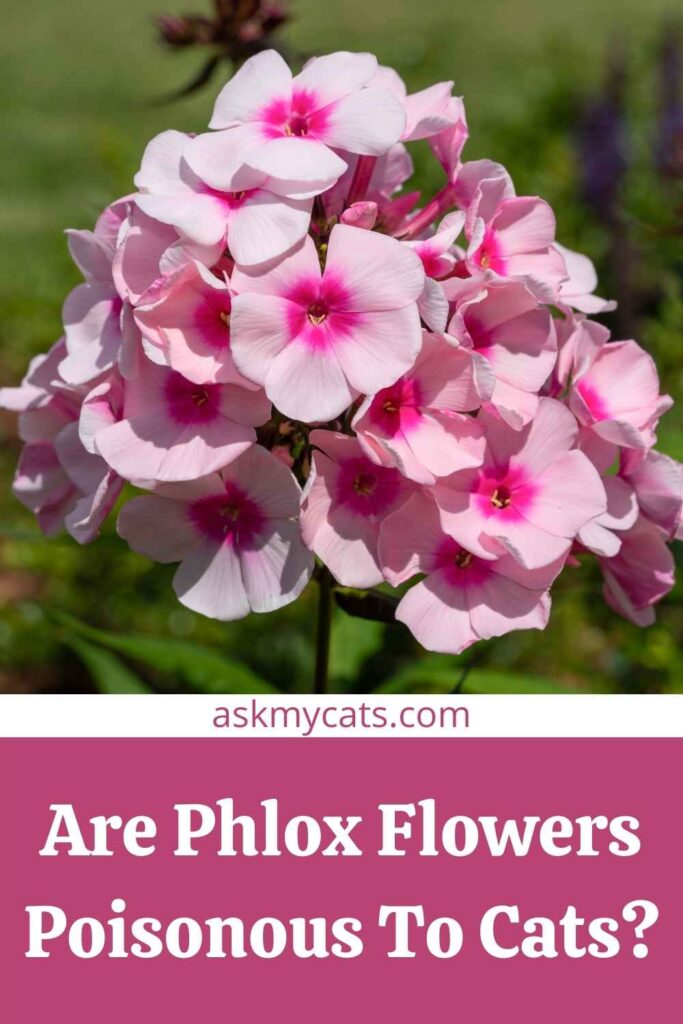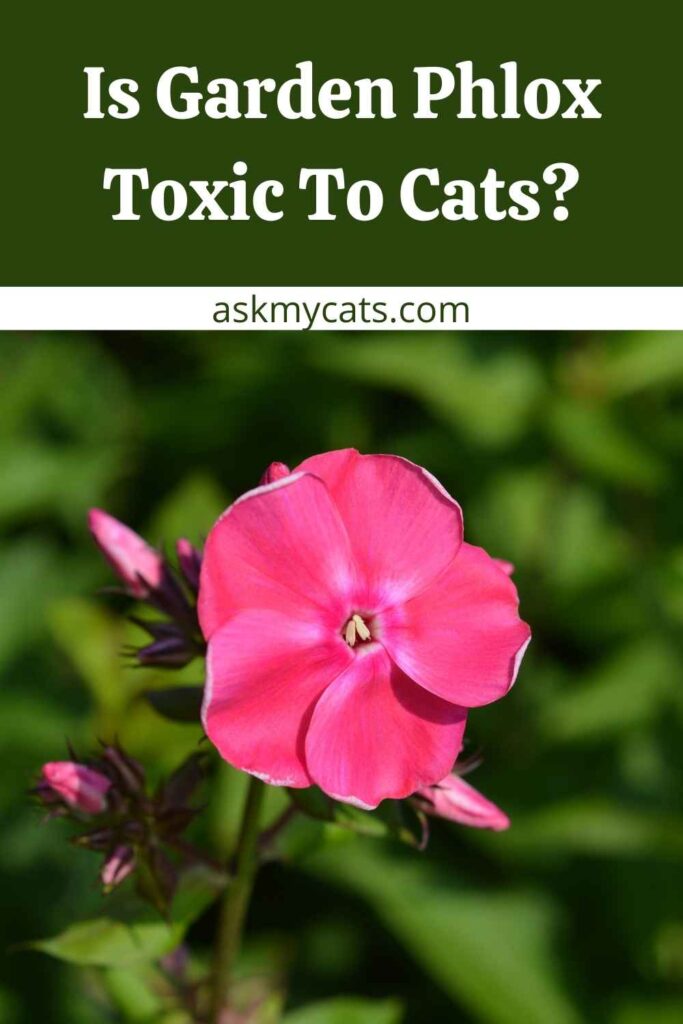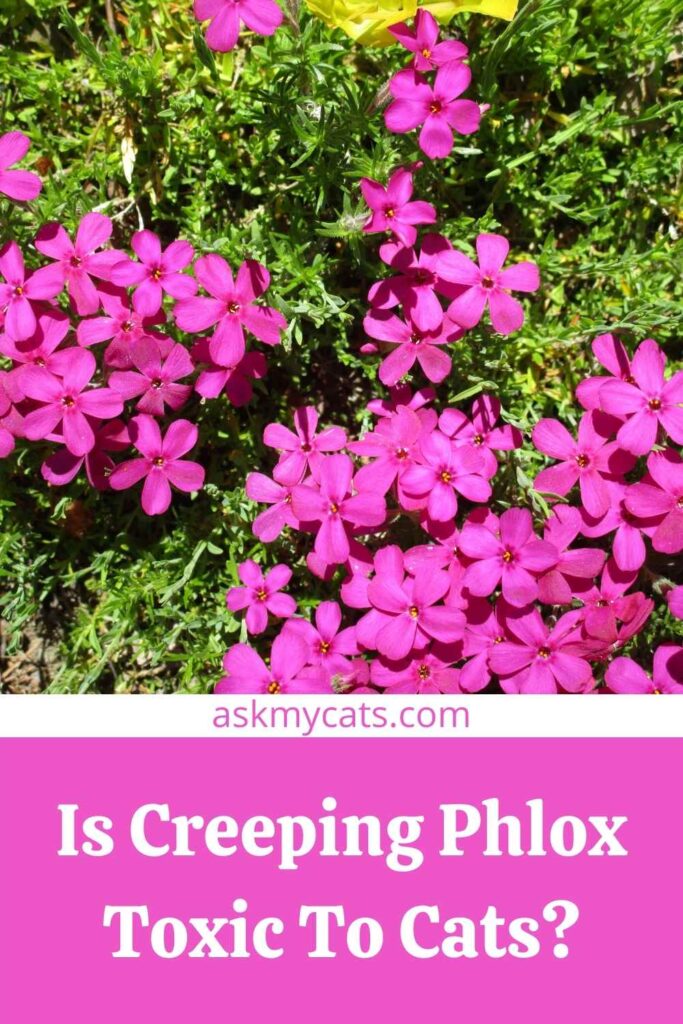When it comes to dangerous and poisonous plants, not all pets are affected by illegal nibbling in the same way. While a dog may not be affected by a day lily, a curious cat may experience vomiting, renal failure, or even death after consuming the popular garden plant.
The blooming plant Phlox, which belongs to the Polemoniaceae family, is not poisonous to cats. Since this evergreen perennial isn’t harmful, your cat shouldn’t be harmed if he nibbles on the leaves or blooms.
Many attractive ornamentals are non-toxic to cats, so pick the safe plants only to beautify your landscape and house.


Give Your Cat the Perfect Day
Get the Free Ebook!
Is Phlox Toxic To Cats?
Phlox is not toxic to cats.
Although there are several varieties of natural phlox, Phlox subulata and Phlox paniculata are the two most typically marketed commercially. Phlox paniculata is sold as garden phlox, whereas Phlox subulata is known as moss phlox, creeping phlox, rock pink, and moss pink.
It would be best to plant phlox in the garden, where it will get at least four hours of direct sunlight each day. After the initial planting, you may look forward to it blossoming every year with minimal maintenance.
Flowers of the Phlox subulata come in white, pink, or purple. It’s a low-growing plant with a mossy name due to the carpet-like mats it generates. The native habitat of this phlox includes rock ledges and slopes, making it ideal for rock gardens.
Phlox paniculata comes in various colours, including white, pink, red, orange, purple, and bicolored varieties. Each plant is 40 inches tall and 23 inches broad on average. These taller perennials are usually placed in the centre or back of a perennial garden.
Both of these phlox species should be safe for cats if purchased from a commercial nursery. Consider not transplanting a native phlox species without first conducting a study to establish what species it is and whether or not it is harmful.
Are Phlox Flowers Poisonous To Cats?
Phlox flowers are not poisonous to cats.

Phlox paniculata, often known as perennial or border phlox, is a tall-growing phlox endemic to the United States with pink blooms. However, numerous garden-worthy varieties are available in various heights and flower colours, making them a favourite classic boundary stalwart.
Perennial phlox is known for its brightly coloured blooms with a sweet, honey-like scent. It thrives in rich, wet soil in soft shade and is an excellent option for the midst of a border.
Phlox paniculata ‘Dusterlohe’ from July to September produces stunning violet-blue blooms. It looks great in a mixed herbaceous border, where it stands out against other blues and purples. In sun or part-shade, grow Phlox paniculata ‘Dusterlohe’ in wet but well-drained soil.
Even if cats get attracted to these bright-coloured flowers and tend to consume them regularly, no toxic effects will happen to the cats.
Is Garden Phlox Toxic To Cats?
Garden Phlox is not toxic to cats.

Garden phlox in the presence of animals is safe. Plants sprayed with pesticides or herbicides, on the other hand, can be dangerous to cats. The phlox species mentioned below are primarily safe to consume if left untreated.
Phlox is a perennial herbaceous plant that may be found worldwide. They come in various sizes and hues, including white, pink, lavender, blue, and occasionally a combination of these colours.
Phlox divaricata is recognized by its deep tubular blue, purple, pink, or white blooms. The lance-shaped leaves range from 3/4 to 1 1/4 inches and are commonly grouped in fours. The leaves of this phlox species were used to produce tea for stomach disorders by Native Americans.
Phlox stolonifera is a spring-blooming perennial that prefers shady, damp conditions. Its blossoms come in various colours, including white, pink, and lavender.
Phlox stolonifera is a native of the Appalachian Mountains, where it grows alongside wooded areas. Phlox stolonifera is a tiny creeping plant that grows up to 6 inches in height.
The leaves of Phlox paniculata are 6 inches long and 1 inch broad. Large panicles of pink, white, and lavender blossoms hang on the tops of each stalk as it reaches 2 to 4 feet tall. These hues are sometimes combined in the flowers.
Creeping phlox are herbaceous perennials that can reach a height of 6 inches and a width of 2 feet. They grow flowers in drifts that almost completely obscure the plants’ short, lance-shaped leaves.
Is Creeping Phlox Toxic To Cats?
Creeping phlox is not toxic to cats.

Creeping phlox, commonly known as moss pink or mountain phlox, is a perennial plant that is a must-have for many rock gardens worldwide. It is a member of the Polemoniaceae family, which includes roughly 65 species.
Since it blooms in the spring and is semi-evergreen, this flower stands out.
Creeping phlox is a low-maintenance plant native to North America’s rocky terrain. It can thrive in any soil and cover your yard in a brilliant floral blanket. Phlox is a Greek word that means “flame” and refers to brightly coloured blooms.
Native Americans have a unique relationship with this plant, and it was once utilized to cure a variety of medicinal issues.
If you let your cats play in the garden frequently, they can eat the blooms and leaves of creeping phlox. The plant will not harm them because it is non-toxic.
In rock gardens, creeping phlox is a common sight. However, regardless of the region, this flower may offer a lot of colour to your environment because tulips and carnations tower over it; this plant pairs beautifully with them. It also attracts butterflies and hummingbirds, so your yard will be a hive of activity in the spring.
Flowers come in various colours, including red, white, blue, pink, purple, and lavender. They have a basic design, a lovely scent, and grow near one another. Starting in the middle of spring, creeping phlox blooms for three to four weeks.
Climbing phlox grows to reach between 4 and 6 inches tall when fully grown, depending on the species. It may spread up to 24 inches, forming a brilliant and vibrant ground cover.
Is Phlox Paniculata Toxic To Cats?
Phlox Paniculata is not toxic to cats.
If you have cats, you can grow phlox flowers without fear of them being eaten. Cats are not harmed by the plant or the seeds of phlox. Even if your cat ingests any, it’s doubtful that it will be bothered in any way.
Frequently Asked Questions
Is Phlox paniculata invasive?
Tall garden phlox is a well-behaved popular late-season flowering perennial, but its evil twin, which has the same five-petal flower arrangement, is very invasive.
Do cats know not to eat poisonous plants?
The majority of cats are picky eaters that watch what they eat. As a result, poisoning in cats is uncommon. The young curious cat or kitten is most in danger of ingesting hazardous plants, especially those found in the home.
How do you keep plants from getting toxic to cats?
If you sprinkle cayenne pepper over the leaves of your houseplants, your cat will swiftly flee. Citrus is also repulsive to cats. To help repel them, put orange and lemon peels in your pots alongside the plants. Another approach is to spray the leaves directly with diluted lemon juice or orange oil.
Final Words
Phlox is absolutely not toxic to cats, and therefore, you don’t need to panic if your beloved kitty has ingested a small proportion of phlox plants. Cats can generally eat phlox, but they are not advised to consume some weedicide or insecticide sprayed to the plant accidentally.
Ask your questions in the comments section below.
